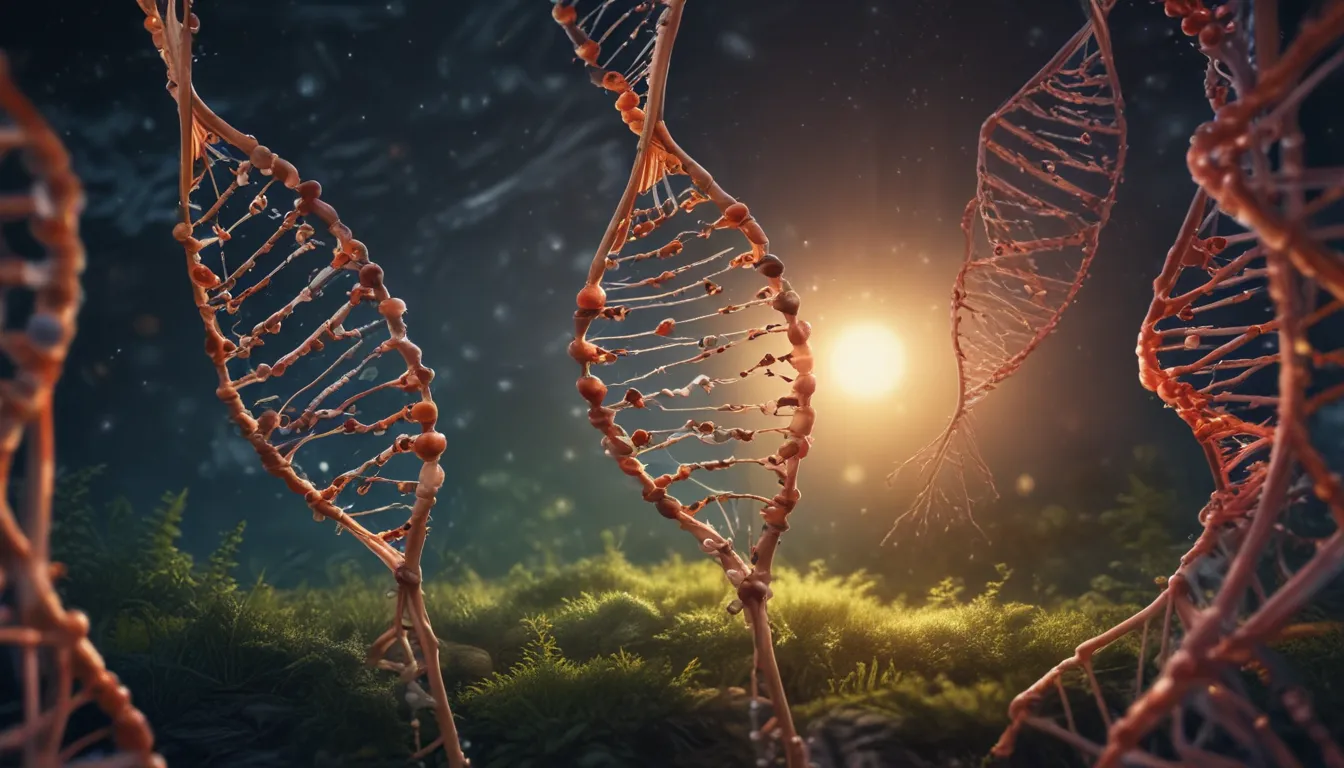A Note About Images: The images used in our articles are for illustration purposes only and may not exactly match the content. They are meant to engage readers, but the text should be relied upon for accurate information.
Genetic drift, a captivating concept in the realm of genetics, has long captivated the minds of scientists and researchers. It involves random fluctuations in the frequency of genetic traits within a population over time, shaping the genetic makeup of species. While natural selection is often seen as the primary driver of evolution, genetic drift also plays a significant role in molding the genetic diversity of populations.
Unraveling the Marvels of Genetic Drift
Genetic drift is a fundamental force in evolution, describing the random changes in gene frequencies within a population over generations. As certain genetic variations become more or less common through reproductive success, the genetic makeup of a population undergoes significant alterations, driving the emergence of new traits and species.
The Impact of Genetic Drift on Evolution
Intriguingly, genetic drift exerts a more pronounced influence on small populations. Unlike larger populations with higher genetic diversity that can dilute individual genetic changes, small populations are more susceptible to chance events that can dramatically affect gene frequencies. This amplification of effects in small populations highlights the significant role of genetic drift in shaping evolutionary trajectories.
Founder Effects and Genetic Drift
When a small group separates from a larger population to establish a new colony, genetic drift can lead to a phenomenon known as the founder effect. This occurrence results in reduced genetic diversity in the new population due to its smaller size. The genetic characteristics of the founding individuals leave a lasting impact on subsequent generations, potentially leading to unique genetic traits and increased vulnerability to genetic disorders.
Catastrophic Impacts of Genetic Bottlenecks
Genetic bottlenecks, caused by sudden reductions in population size due to natural disasters, disease outbreaks, or human activities, can drive genetic drift. These events result in limited genetic diversity within the surviving population, setting the stage for long-term consequences such as reduced genetic variation and increased susceptibility to threats.
The Counteracting Force of Genetic Drift
A fascinating aspect of genetic drift is its ability to override the effects of natural selection. While natural selection favors individuals with beneficial traits, genetic drift operates randomly and can hinder the passing on of advantageous traits in small populations. This counterbalance to natural selection demonstrates the intricate interplay of evolutionary mechanisms.
Pivotal Role of Genetic Drift in Speciation
Genetic drift serves as a crucial process in the formation of new species through speciation. As gene frequencies shift within isolated populations, reproductive barriers emerge, preventing gene flow and leading to genetic divergence. Over time, these isolated populations accumulate enough genetic differences to be classified as distinct species, showcasing genetic drift’s role in driving biodiversity.
Asexual Organisms and Genetic Drift
In asexual organisms devoid of sexual reproduction mechanisms, genetic drift wields a more profound impact. With no genetic recombination, chance events and mutations serve as primary drivers of genetic diversity, influencing the genetic composition of asexual populations to a greater extent.
The Unpredictability of Genetic Drift
One captivating aspect of genetic drift lies in its inherent unpredictability. The randomness of genetic drift makes it impossible to foresee which alleles will become prevalent in a population, adding an element of intrigue to the evolutionary process and highlighting the role of chance in genetic variation.
The Threat of Extinction
In small populations, genetic drift can heighten the risk of extinction as chance events may result in detrimental alleles becoming fixed. This fixation of deleterious alleles can diminish a population’s fitness and hinder its ability to adapt to changing environments, ultimately contributing to its decline and possible extinction.
As evidenced by these remarkable insights, genetic drift is a captivating phenomenon with profound implications for the evolution and diversity of life on Earth. Embracing the complexities of genetic drift enhances our comprehension of the natural world and underscores its pivotal role in shaping the biological landscape.
Concluding Thoughts
In conclusion, genetic drift stands as a compelling force in evolutionary biology, influencing populations and species over time. By exploring these nine captivating facts about genetic drift, we gain a deeper appreciation for its impact on genetic diversity, adaptation, and speciation. The interplay of genetic drift with other evolutionary forces unveils the intricate web of life’s diversification processes.
Frequently Asked Questions
-
What is genetic drift?
Genetic drift refers to random fluctuations in the frequency of genetic variants within a population over time, primarily driven by chance events. -
How does genetic drift differ from natural selection?
While natural selection favors advantageous traits, genetic drift is a random process unaffected by the fitness of specific variants. -
Can genetic drift lead to harmful genetic variants becoming fixed in a population?
Yes, genetic drift can result in harmful variants being fixed in small populations due to chance events. -
Is genetic drift more pronounced in small or large populations?
Genetic drift is typically more pronounced in small populations, where chance events can have a significant impact on genetic composition. -
Can genetic drift lead to the formation of new species?
Genetic drift can contribute to genetic differentiation between populations, leading to the emergence of new species over time. -
How do scientists study genetic drift?
Scientists analyze genetic markers and changes in allele frequencies over time to study the effects of genetic drift on populations.
Delve into the enigmatic realm of genetic drift and witness the intricate dance of chance and evolution shaping the tapestry of life. Explore the profound impacts of genetic drift on genetic diversity, adaptation, and speciation, enriching your understanding of the remarkable processes driving the diversity of life on our planet. Trust in the authenticity and reliability of our content as you embark on a journey of discovery and learning.






